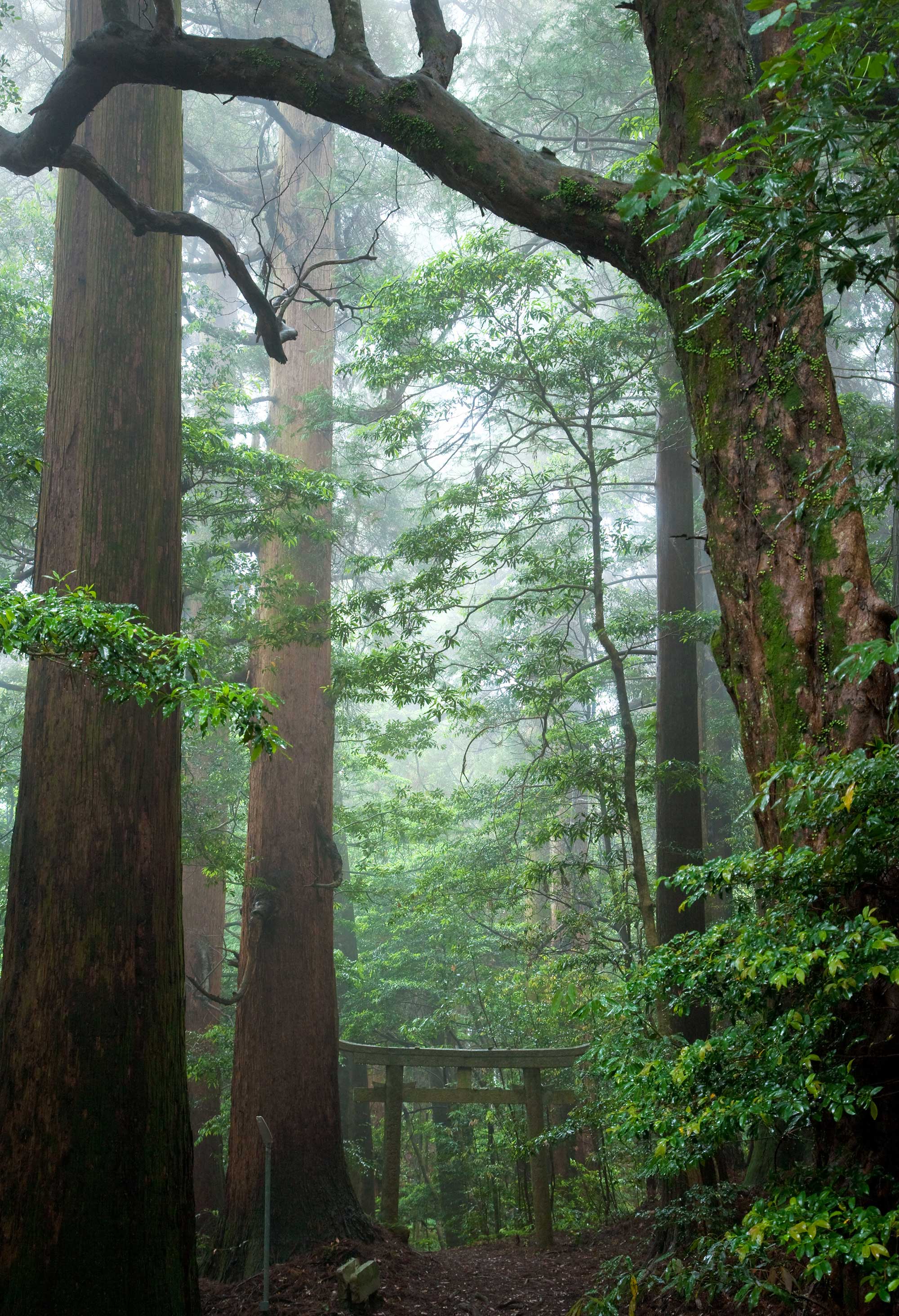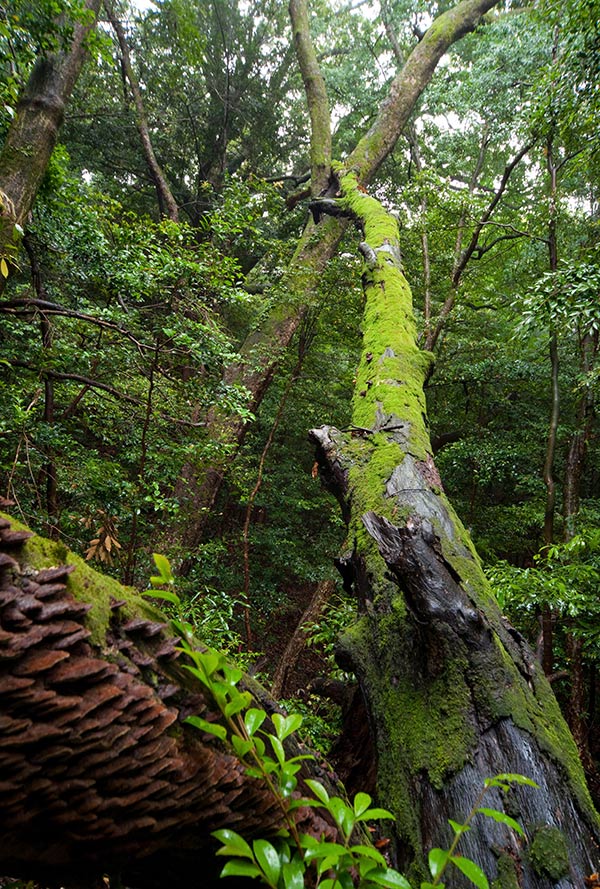

- Kennan Area
- Nature
- Shrines・Temples
Forest in Takadoya Shrine
Photography/TAKEUCHI Yasunori
Typical Primeval Landscape
Ume, Saiki is in the middle of the mountains. The famous song “Ume no Uta Genka” has a lyric where the mother putting her baby to sleep sadly cries, “the Mountains are too high and I can’t see the house I grew up.” Well, these mountains are not like an alpine, but they are quite steep and large. Of these mountains, there’s one called Mount Takatoriya (or Takatoya) (639 meters). A shrine sits on top of the mountain, and the whole area is covered with natural forest which is a designated natural monument of the prefecture.
Vehicles may drive up close to the shrine. As you walk through the path lined with large cedars, you will be greeted by a hawk instead of the guardian dogs which is typical of a shrine. Go up to the peak. Although there are some fir trees from the woods on the premises to the national forest, most of these are Japanese evergreen oak, including Akagashi (Quercus acuta) and Urajirogashi (Quercus salicina), whose sub tree layer and shrub layer consist of Isu Tree (Distylium racemosum), Japanese camellia (Camellia japonica), Japanese cleyera (Cleyera japonica), Yuzuriha (Daphniphyllum macropodum), and Hainoki (Symplocos myrtacea), where evergreen trees dominate. Sasanqua (Camellia sasanqua) also grows naturally. You might also find marlberry (Ardisia japonica) and autumn fern (Dryopteris erythrosora) there.
Forest with evergreen broadleaf trees is common in Southwest Japan. You might also say it is the primeval landscape of the Japanese archipelago. Our ancestors have spent a long time in this type of forest. The protective forest established around the shrine in the village is the remains of such, but here we still have an untouched forest, which we would feel “the weight of time,” as if we went back to the old days, or some may even feel the spiritual energy.
The history of the shrine also goes way back. According to the legend, when the Yano clan, who used to be in Etchu Tateyama moved to Kishu Kumano, he was told to go to Chikushi (Kyushu) by a god, and so he went and served for the Otomo clan in 1275. He then was sent to Ume to protect the south of Bungo, where he was led by two white hawks who seem to serve for Gongen (buddha), to arrive into this mountain. The chief priest of the shrine is named Mr. Yamato Yano, who is known for serving for South Prefecture Rakugo Organization, and as the sightseeing ambassador of the former Town of Ume and Saiki.
Tsubakihara Festival is one of the most famous events representing Ume. With Takadoya Shrine’s lead which brings together the 27 shrines in the Ono area, the Mikoshi float departs the mountain and comes down to Nakatsuru branch, to hold a grand festival.

The shrine sits on top of Mount Takatoriya in Ume, Saiki, and the whole area is covered with natural forest which is a designated natural monument of the prefecture.

